Royal Navy submarines of the future conceptualised
- Published
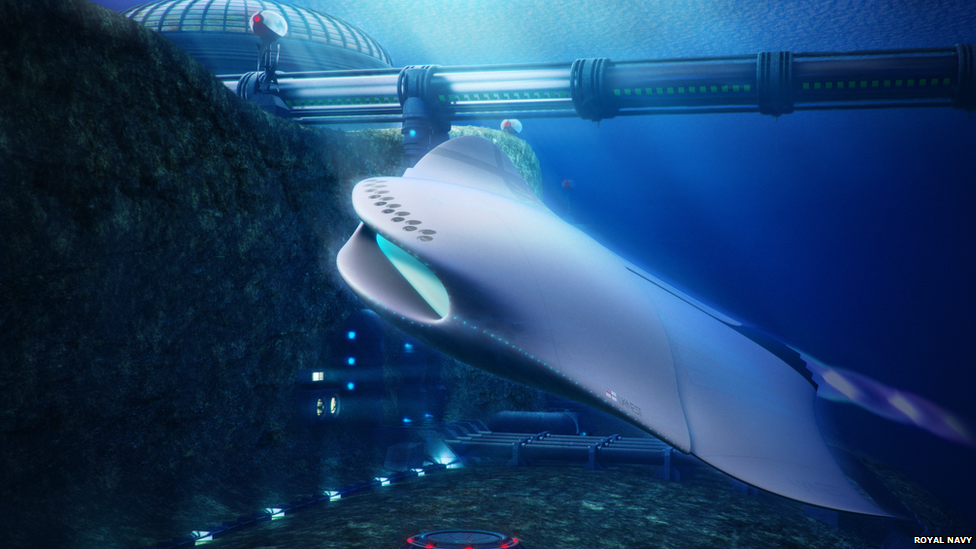
The Nautilus 100 mothership is based on a hybrid between a whale shark and a manta ray
A manta ray mothership, eel-like drones and fish-shaped torpedoes... not things from a sci-fi movie but visions of the Royal Navy submarines of the future.
Twenty scientists and engineers aged 16 to 34 were challenged to "visioneer" a new generation of underwater craft.
Their ideas drew heavily on marine life, feature surfaces that can shape-shift, and boast radical new propulsion technologies.
The concepts aim to inspire new ideas for underwater combat in the future.
However, the BBC's defence correspondent Jonathan Beale says the Navy is unlikely to turn many of these visions into reality.
'Think differently'
Cdr Peter Pipkin, the Royal Navy's fleet robotics officer, said: "Today's Royal Navy is one of the most technologically advanced forces in the world, and that's because we have always sought to think differently and come up with ideas that challenge traditional thinking."
In the 18th Century the Royal Navy began sheathing ships in copper - dramatically improving speed - and the dreadnought revolutionised naval warfare in the run up to World War One.
The new concepts were dreamed up by scientists from BAE Systems, Rolls Royce, Lockheed Martin and the Ministry of Defence, who were asked to envisage submarine warfare in 50 years' time.
The challenge was to design craft that are cheap to run and deadly in battle.
Cdr Pipkin added: "If only 10% of these ideas become reality, it will put us at the cutting edge of future warfare and defence operations."
So how do the designs look?
1. Nautilus 100 mothership
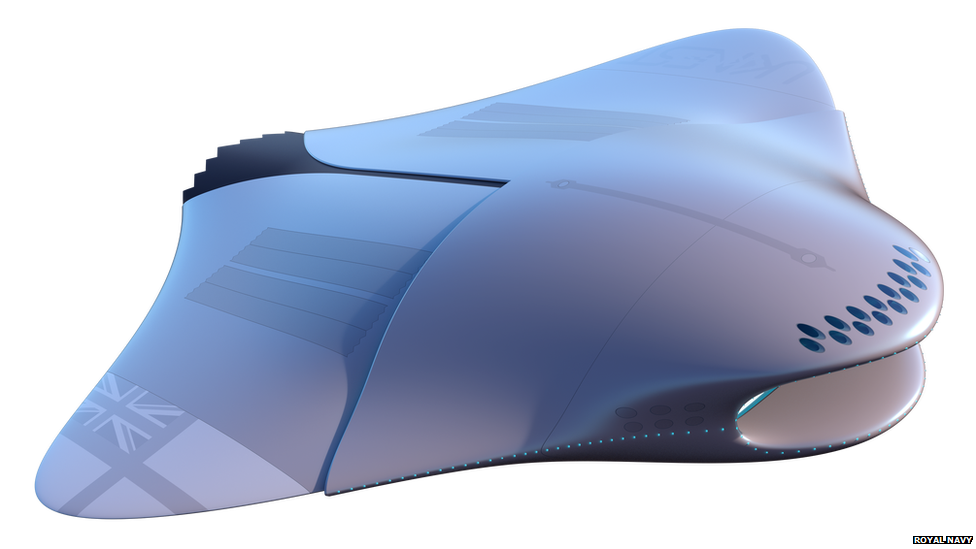
The mothership could remain at sea for months at a time, docking with underwater bases
Based on a hybrid between a whale shark and a manta ray, the mothership's hull would be 3D-printed and built from super-strong alloys and acrylics, with surfaces that can morph in shape.
With tunnel drive propulsion similar to a Dyson bladeless fan, it could travel at 150 knots, sucking water through the bow and expelling it from the stern.
A crew of 20 would live on board, and the vessel could dock at underwater stations based around the world.

Analysis
By Jonathan Beale, BBC defence correspondent
The Royal Navy's thinking big about the future. It's already held the first large-scale maritime exercise involving hi-tech robots and underwater systems -"Unmanned Warrior".
But the harsh reality is there simply isn't the resources to turn these latest dreams into reality. And in truth, the Navy's thinking often looks to the past as much to the future.
Most of its budget is being spent on two new aircraft carriers, new frigates to protect them and four new submarines to carry the UK's Trident nuclear missiles.
This is what the Royal Navy will be operating for decades to come. These new ships and submarines will be far more advanced than what it's had before. But they're still more Cold War era than science fiction.

2. Eel unmanned vehicles
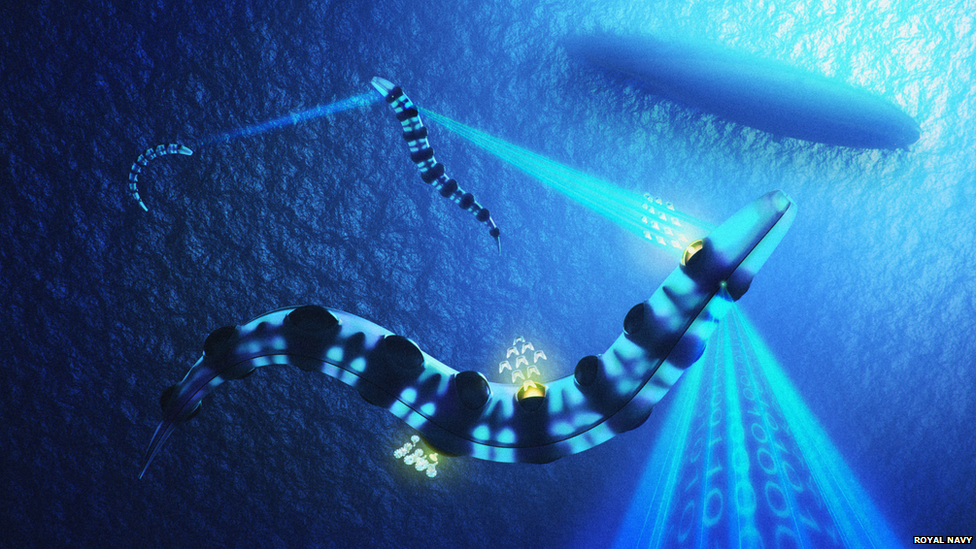
These eel-like unmanned vessels would carry weapon systems and sensors
Launched from weapons bays on the mothership and themselves armed, these submarines would travel hundreds of miles in near-silence using sine wave propulsion.
Their main purpose would be to eject individual sensor pods that use lasers to communicate with each other, forming an underwater communication network.
3. Dissolvable micro drones
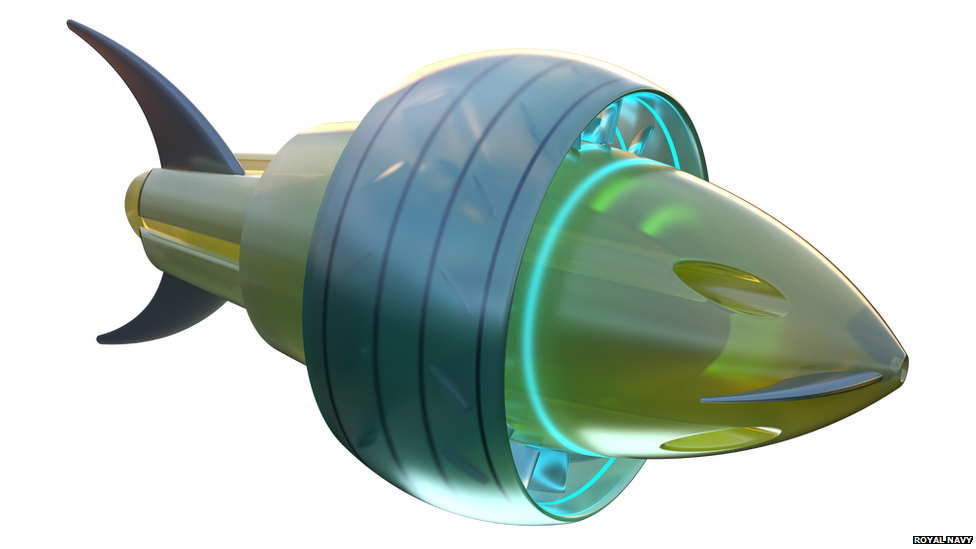
The drones would be made from similar materials to washing machine soap capsules
These gizmos would be launched from the eel vessels in large groups, and could be directed to block uptakes and intakes on enemy craft, rendering them inoperative.
They could carry out reconnaissance, shadow foreign submarines or undertake escort duties.
Made from saltwater soluble polymers - like capsules for washing machines - they can be dissolved when secrecy demands.
4. Flying fish drones
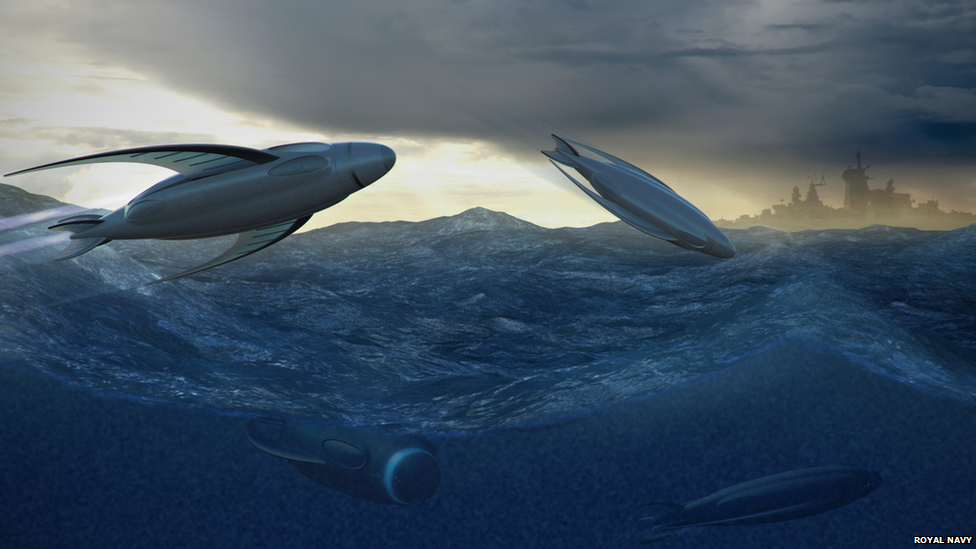
A replacement for torpedoes, these provide an adaptable weapon system to attack ships, submarines or even targets on dry land.
Their payloads would include cluster missiles, electromagnetic pulses or shockwave emitters.
Operating in and above the surface of the water, they would be especially hard to detect with radar systems owing to the "noise" created by choppy waters.
If detected, they could immediately use plasma batteries to dive for the safety of the deeps.
- Published31 August 2015
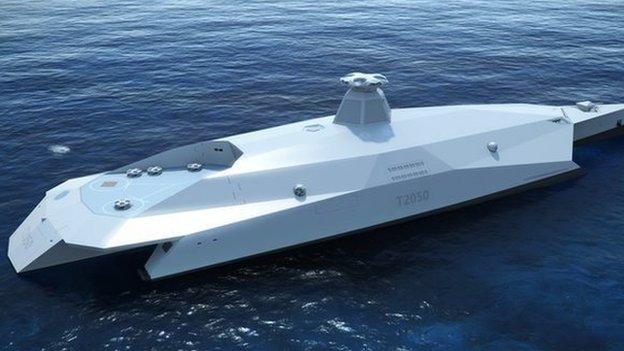
- Published20 August 2012
